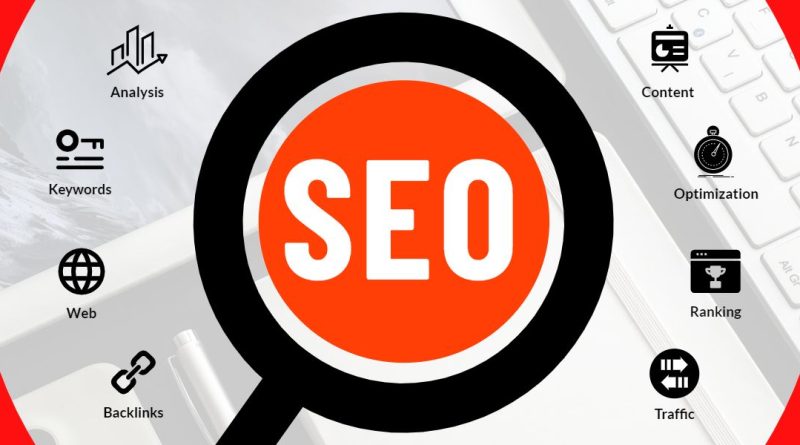SEO Strategy Plan: The Traffic-Generating SEO Strategy in 2022
How to plan SEO strategy? What should I focus on? How to improve my ranking? These questions keep popping up every day. There are lots of SEO strategies out there, but they don’t always work. If you want to get ahead of the competition, you need to learn the basics of SEO to get started.
SEO stands for Search Engine Optimization. It’s a way to rank higher in Google and other search engines. When someone searches for something on Google or another search engine, their results show up. The higher your site appears in those results, the more likely someone will click on it. This means more traffic and potential customers for your business.
Before you start optimizing your site, you need to figure out where you stand now. Take some time to analyze your current position and see what you need to change. Once you know what keywords you need to target, you can create a keyword research report. Then, you’ll want to write a detailed SEO strategy plan. Finally, you’ll need to implement your plan.
What every SEO strategy must have
SEO is basically the practice of writing more content, using more linking, and using a wider range of keywords. This is known as scaling and it’s pretty much how it sounds.
In short, it is a process that creates a big impact on your website’s search ranking.
Let’s get into the details:
Keyword targeting
Make sure you choose the right words for the job. You may be tempted to go with highly competitive keywords that have lots of competition, but this isn’t necessarily going to help your rankings. Choose high volume low competition keywords instead.
Find out which keywords are driving the most traffic to your site. Look at your analytics reports to find out which pages are getting the most visits and which ones aren’t. You can use SEMrush free trial to find keywords that are driving traffic.
You may also use keyword ranking tools to find out the positions of the keywords you are targeting. Therefore, you can tailor your SEO strategies according to that.
Content creation
Write as many pages of content as possible. Don’t just add one page per week, do it all at once! Use your blog posts to promote links back to your main pages.
Create new content regularly because people tend to forget about old stuff after a while. Make sure you provide value first. Your audience wants quality information, not spammy content.
Link building
Link building is the backbone of any good SEO campaign. If no one links to your articles and sites then you won’t get any visitors.
Link building is probably the most important part of SEO. Get links from quality websites with strong domain authority. Be careful not to overdo it though – if you’re spamming people by submitting thousands of links, Google will eventually notice.
Use different methods like guest posting, social media sharing, and forum commenting to build links. Backlinks are important. They’re basically websites that link to yours.
If you don’t have enough backlinks, it could hurt your rankings. So make sure you ask for backlinks from relevant websites.
Use internal linking
Another way to optimize your site is to link internally within your site. Link from one section of your website to another. For instance, if you publish a post on your company blog, you could include a reference back to that same post from another internal page.
This helps improve user experience and keeps them engaged.
Make sure you include an introductory paragraph before each link. This tells the reader exactly what they’re getting into.
Internal linking is a useful tactic for increasing the visibility of your content. This helps readers discover related information without leaving your site.
Internal linking is also helpful for SEO purposes. Search engines like pages with high numbers of incoming links.
Optimizing images
Images play a huge role in your overall site performance. Just adding a few pictures can increase your conversion rate. People love looking at beautiful photos.
Add alt tags to all your images so they appear when users search for certain terms. Also, upload optimized versions of your images so they load faster.
Try to upload compressed images it will save your space and eventually increase your website speed that affects site ranking.
Analytics
Analytics are essential to know where your traffic comes from. It helps you create better content and reach potential customers.
Google Analytics is free and easy to install. It allows you to track visitor behavior, and see their location and device type. It also gives you insights into the source of your traffic.
Optimizing your existing content
Make sure you optimize your existing content for better search performance. This includes things like adding alt text (keywords), Schema markup, and making sure you use descriptive titles and tags.
You also want to make sure that you’re doing everything you can to avoid duplicate content penalties. If you have multiple pages about the same topic, Google will penalize you. So, try to consolidate these pages into fewer, bigger ones.
Run your content with free online proofreading tools to eliminate grammatical errors and spelling mistakes.
Technical SEO
Technical SEO refers to tweaking your site’s code to improve its performance on search engines. There are lots of technical aspects to SEO, such as schema markup, but there are some simple ways to go about improving your site’s appearance.
For instance, you may be able to reduce the number of redirects or broken links by using rel”canonical” tags. You’ll need to learn how to edit HTML files to do this, however.
Mobile optimization
Mobile optimization is very important nowadays. A lot of people access the Internet via mobile devices.
So your website needs to look good on both desktop and mobile. Create separate layouts for each viewport size and test them thoroughly.
This lets you figure out which design works best and which doesn’t. Your website should also display correctly across all browsers, platforms, and devices.
Create a sitemap
A sitemap provides a visual representation of the structure of your website.
It makes navigating your site easier for visitors. Visitors need to be able to find what they’re looking for quickly. That means having a clear navigation system and keeping it updated.
A sitemap helps with this. It shows users where content is located on your site.
You can also use it to help Google crawl your site more efficiently. If you have a large site, a sitemap will take longer to generate than if you had smaller pages. But it’s worth it because it will allow Google to index your entire site more easily.
Use the Yoast plugin
The Yoast SEO plugin is an excellent tool for optimizing any WordPress-based blog or website.
Using the Yoast plugin lets you keep up to date with changes to the algorithm and offers suggestions based on your current settings.
The plugin has over 500,000 active installs, and it’s one of the most popular plugins available.
Why is organic traffic and SEO important?
One thing to note about SEO is it takes time. It won’t happen overnight. And while you’re building your brand, ranking in search results might not even be possible.
That’s why it’s essential to plan ahead and build solid foundations now so that when you begin, you’re already set up for success.
Remember, when it comes to SEO, quality wins. Don’t sacrifice quality for speed.
If you’re planning to launch a new product on Amazon, for example, don’t just rush through creating the listing. Spend plenty of time researching keywords and writing detailed descriptions.
Then, once you’ve published your product page, spend at least two weeks monitoring your listings before launching your campaign. This gives you time to see which products rank well and which ones don’t.
Then, after you’ve determined which keywords perform well, you can focus on those keywords when creating your ad campaigns.




